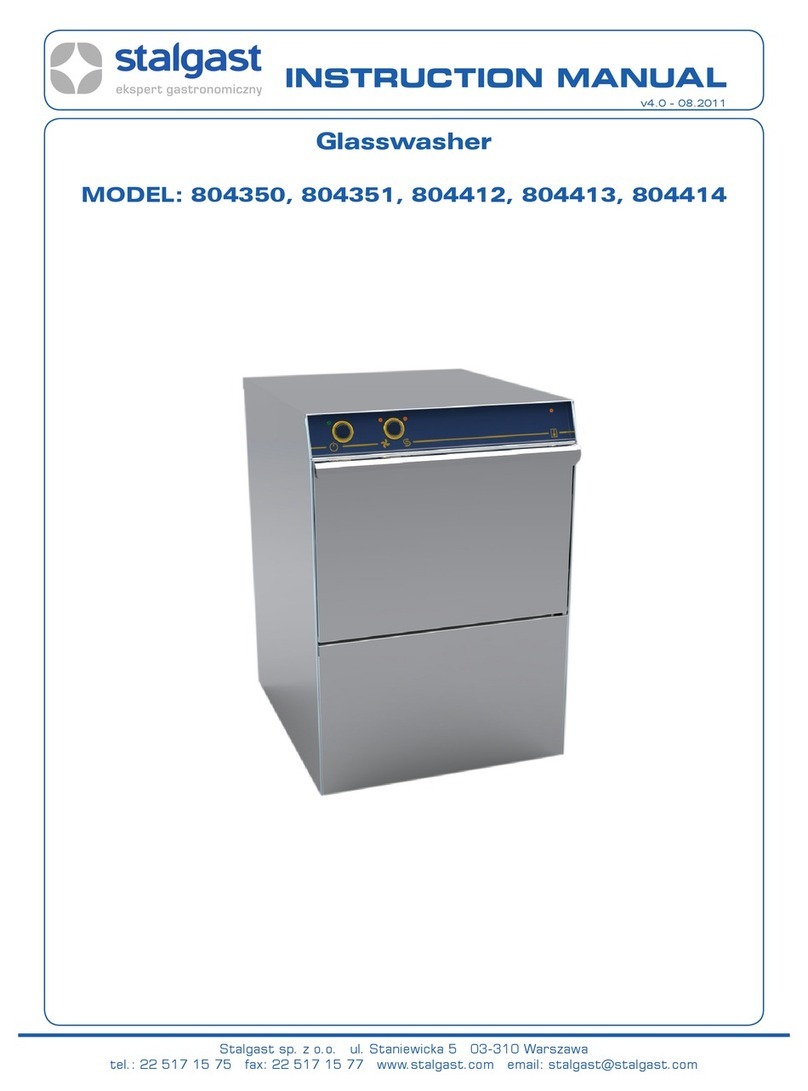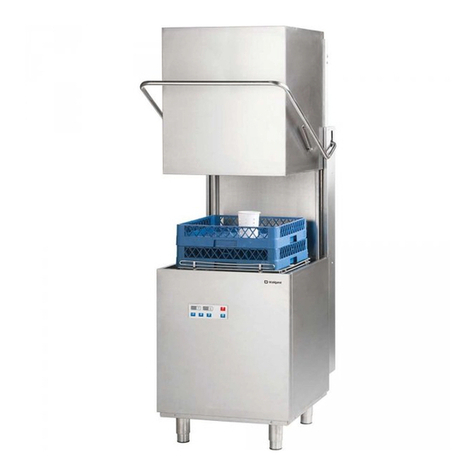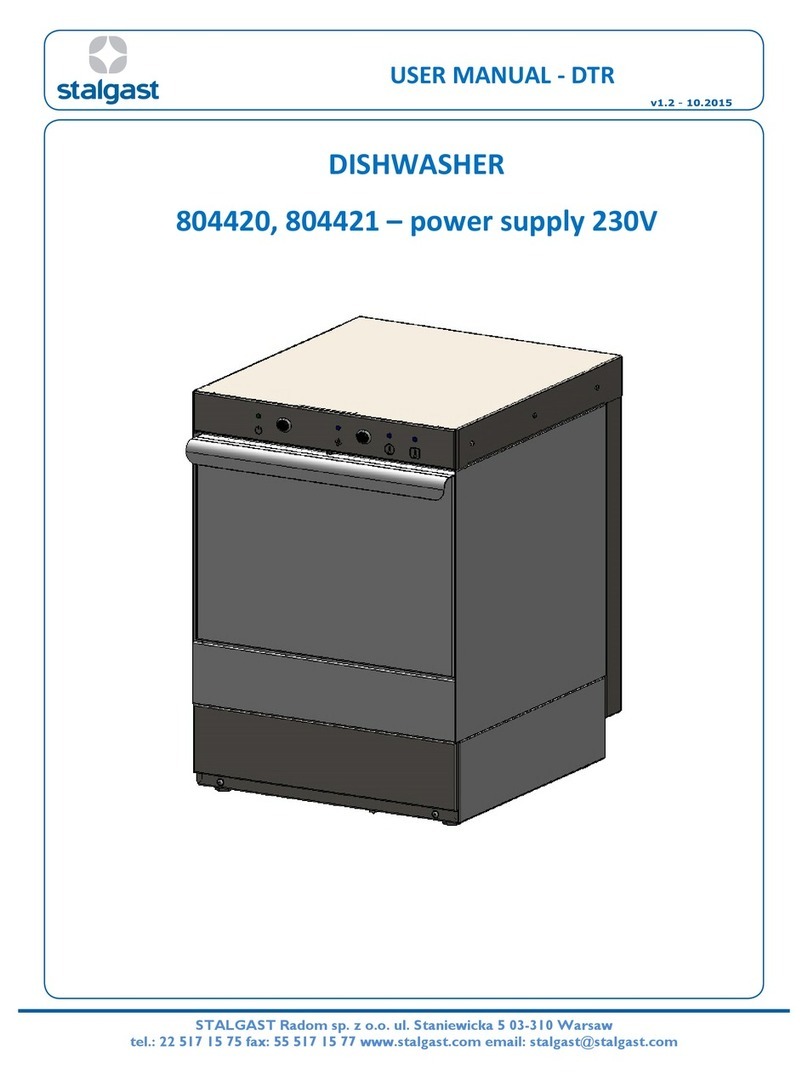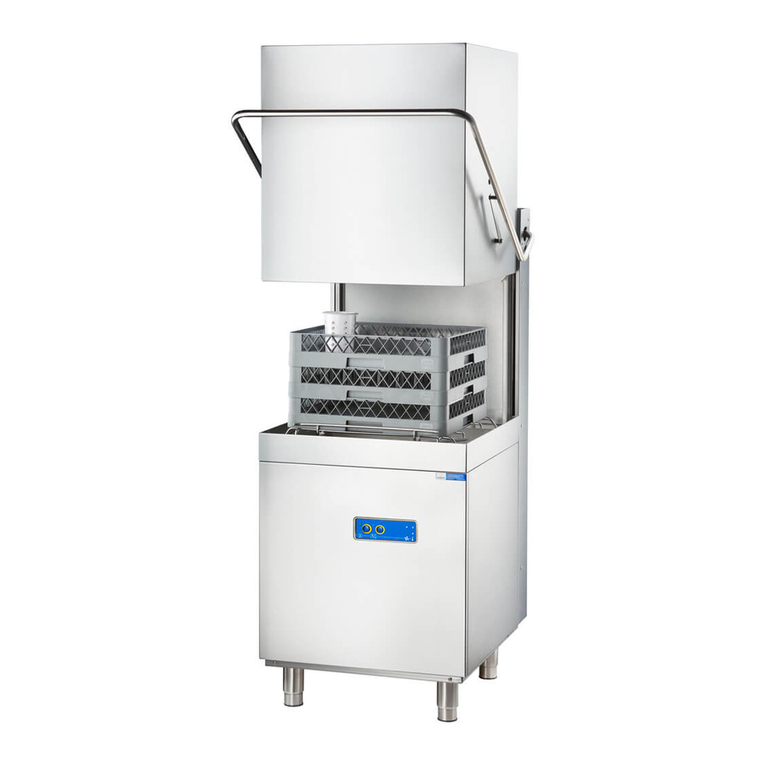
STALGAST Radom sp. z o.o. ul. Staniewicka 5 03-310 Warszawa
tel.: 22 517 15 75 fax.: 22 517 15 77 www.stalgast.com email: stalgast@stalgast.com
III. Drain
The dishwasher is equipped with a drain pipe, which is to be installed at floor level with the use of a
deaerator.
Before commissioning the machine make sure that the supply and drain pipes are not bent,
blocked or damaged in any other way during the process of installation.
IV. Positioning the machine
2. The machine is to be carried into the place of installation, unpacked and contents of the packaging
should be verified. In case of any damage to the machine or its elements the shipping company
should be notified immediately. All materials used for packaging are environment friendly and must
be stored safely in a proper place. Elements meant for recycling are marked as follows:
•PE – polyethylene; external packaging, instruction manual cover, safety elements of the
packaging
•PP – polypropylene; handles
•PS – polystyrene foam; edge guards, lid
•Wooden and cardboard elements of the machine should be left in designated places in
accordance with current regulation.
Do not dispose the machine or its elements directly to the natural environment. The device is
manufactured of stainless steel and metal elements, which may be easily disassembled. Plastic
elements of the device are marked with proper symbols.
Connections of the machine must meet requirements of current norms in the place of
installation. Before installing the machine make sure, that the elements sensitive to humidity are
protected against moisture e.g. when the machine is being washed.
Remove all outer packaging and the protective film from your machine before positioning.
Ensure there is a clearance each side of the machine to allow slight sideways movement for servicing.
Ensure the surface your machine is going to be installed on is stable and capable of supporting it
during normal operations. Once installed use the adjustable feet to ensure your machine is stable,
with its weight being distributed equally and does not tilt. Level the machine using a level tool. Any
other means of machine leveling should be approved by the manufacturer.
V. Machine first start-up
Before first use of the dishwasher make sure the electrical safety system is working correctly.
This, and first machine commissioning, must be performed only by employees of the technical
service, who should also provide a short training on functioning of the machine. Each machine is
equipped with rinse detergent pump. Wash detergent pump is available on chosen dishwasher
models. Containers with wash and rinse detergents should be set in place and connected with PVC
hoses: transparent for washing detergent and transparent/blue for rinse detergent. In order to
calibrate detergent pumps use the screws as seen on Fig 2 and Fig 4. It is recommended that the
calibration is performed by the personnel of the detergent supplier. Before connecting PVC hoses
attach weights (in order to keep hoses at the bottom of the detergent containers) and install filters.
(Fig 5).
Fig 2 Fig 3 Fig 4




































